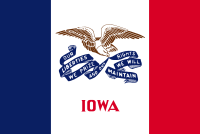Ingri Parin d’Aulaire (born Kongsberg, Norway, 1904; died Wilton, Connecticut, October 24, 1980) wrote and illustrated about 27 books with her husband Edgar. They received the 1940 Caldecott Medal for Abraham Lincoln. They are most famous for their book d’Aulaires’ Book of Greek Myths. Children could learn more at: Ingri Parin d’Aulaire.
Johannes Kepler (born Wurttemburg, Germany, 1571; died Regensburg, Germany, November 15, 1630) was the “father of modern astronomy.” He developed three laws that explain the motion of planets around the sun. Isaac Newton based his theories regarding motion and gravity on Kepler’s work. Idea: Students could create models of Kepler’s three laws of planetary motion. They could learn more at: Johannes Kepler.
Louis Pasteur (born Dole, Jura, France, 1822; died Villeneuve l’Etang, France, September 28, 1895) was a bacteriologist. He discovered a cure for rabies. The pasteurization process was named in honor of him. Idea: Children could discover how and why milk is pasteurized. Then they could make chocolate milk. Older children could learn more at: Louis Pasteur.
Ted Rand (born Mercer Island, Washington, 1915; died Mercer island, Washington, March 17, 2005) illustrated approximately 78 books for children. He illustrated Knots on a Counting Rope (written by Bill Martin, Jr.), Salty Dog (written by his wife Gloria), and If Not for a Cat (written by Jack Prelutsky). Children can learn more at: Ted Rand.
Diane Stanley (born Abilene, Texas, 1943) writes and illustrates children’s books. A very versatile person, she writes novels, biographies, and picture books. She also wrote the Time Traveling Twin Series. I find her biographies, especially Cleopatra and Leonardo da Vinci, to be perfect for children. Children can learn more about her and examine her staggering list of awards at: Diane Stanley.
Erin E. Stead (Farmington Hills, Michigan, 1982) illustrates books for children. She received the 2011 Caldecott Medal and a 2011 Charlotte Zolotow Award/Honor Book for A Sick Day for Amos McGee, written by her husband Philip C. Stead. Children can visit her website at: Erin E. Stead.
 Shenandoah National Park was created in 1926. The park, around 200,000 acres in area, encompasses parts of the beautiful Blue Ridge Mountains in Virginia. Shenandoah National Park has over 500 miles of trails, and 101 of those miles are part of the Appalachian Trail. Children could visit the national park website, watch the videos, and particularly check out the WebRanger portion, at:
Shenandoah National Park was created in 1926. The park, around 200,000 acres in area, encompasses parts of the beautiful Blue Ridge Mountains in Virginia. Shenandoah National Park has over 500 miles of trails, and 101 of those miles are part of the Appalachian Trail. Children could visit the national park website, watch the videos, and particularly check out the WebRanger portion, at:

